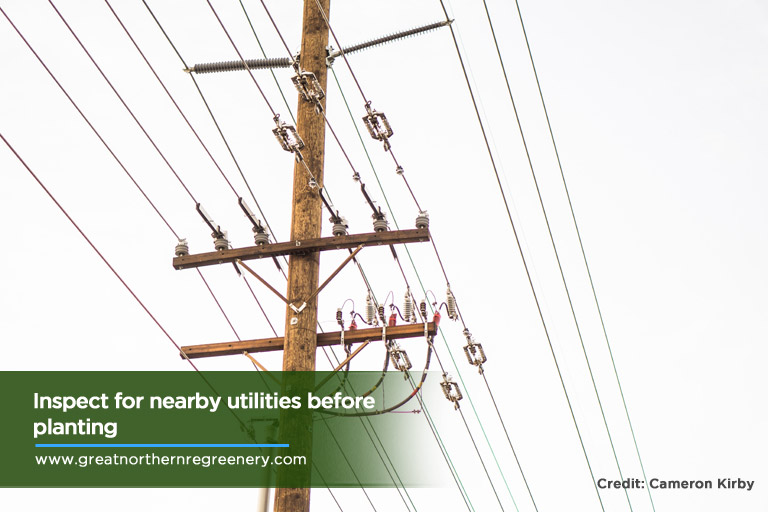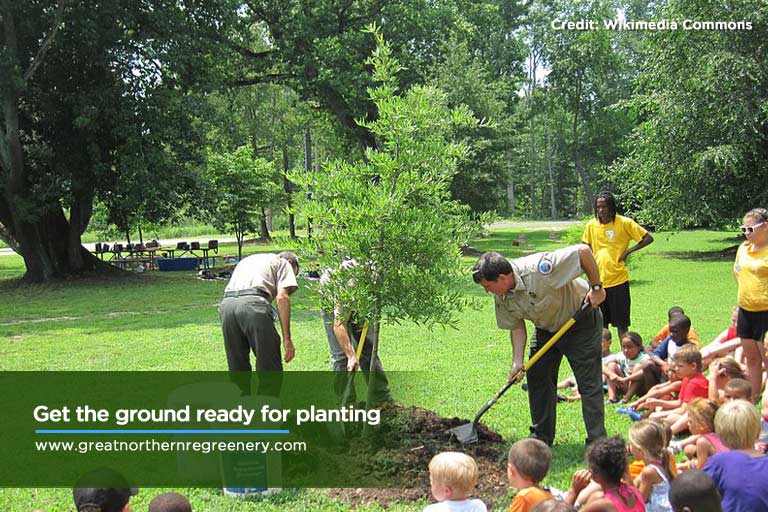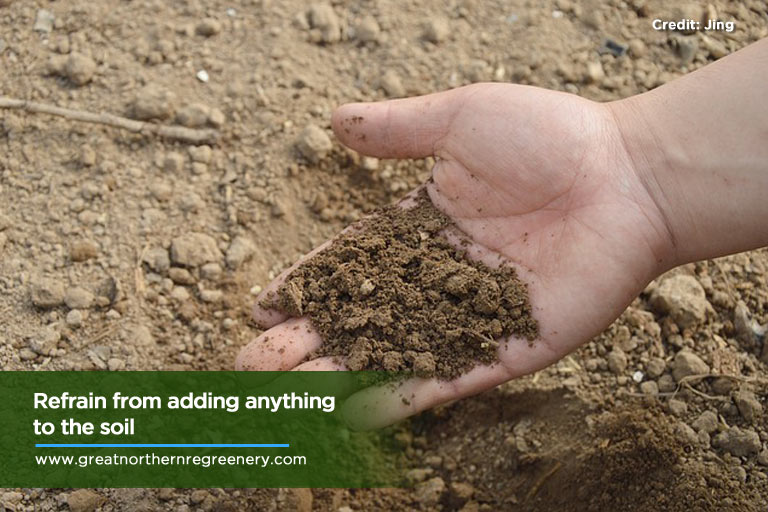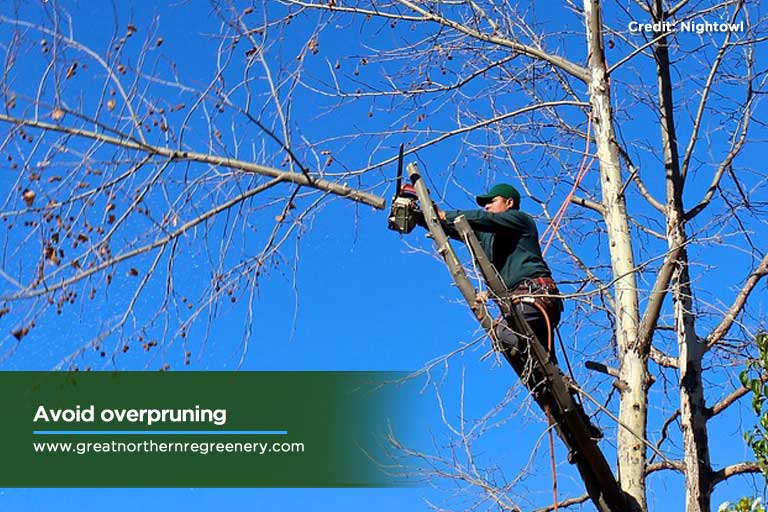Before you plant a tree, there are preparations you need to make. A tree is an investment for the future, and it needs some things in place to make the most of it. To avoid making any costly mistakes that might spoil the appearance of your yard, take note of these dos and don’ts. Trees need specialized care to thrive. Use these tips to help yours stay alive for years to come.
Here are a few useful items to check for before you choose where to plant your new tree. Following these guidelines will help avoid costly consequences now and in the future.
Do:

- Check your tree isn’t too close to power lines
When planting your tree, have an eye for nearby utilities like power lines. If your tree grows too large, it might touch the power lines, making the tree a future fire hazard or causing it to disrupt power in a storm. Choose your planting site carefully, and avoid choosing a species that could grow too tall for the location. If your tree does get too close to power lines, give the utility company a call. They may trim the tree free of charge.
- Choose the right tree for your needs
Different trees have different qualities. When you go to the nursery for a tree, avoid picking the first tree you find. Instead, be aware of what you’re looking for in a tree. Do you want a tall tree with a big canopy for shade? Or do you want fruit trees to give your family something fresh for food choices? Consult the on-site arborist to help you find a species that can thrive in your yard.
- Plant for energy efficiency
If you’re planting a shade tree, a location to get the most benefit of shade. Planting trees with large crowns on the south side of your property will provide ample shade all afternoon. Trees with lower crowns belong on the west side to catch the late afternoon sun. During winter, evergreens can serve as windbreakers and keep the house warm. Plant these to block the prevailing wind and keep it out of the house.

- Prepare the ground properly
When it comes to digging your hole, plan carefully. Measure the diameter of the tree’s root ball to determine the size of the hole. Excavate an area three times the diameter of the root ball to give the roots ample space to grow. Measure the depth of the hole carefully, so the root flare stays above ground. Break up the soil at the site to make it easier for the roots to spread out. Root systems must be deep and wide so the tree can get enough nutrients and stay stable.

- Find the right time to plant
Wait for a good time to plant your tree — optimally, for cool, cloudy weather when there isn’t as much sun. That will give the tree time to set roots deep into the ground and absorb moisture. Deep roots also help keep the tree stable and healthy for the future. For best results, plant early in the morning or late in the afternoon to avoid exposing your sapling to too much sun.
- Use organic fertilizer
When you need fertilizer, consider using organic fertilizer instead of inorganic. Organic fertilizers are healthier for your soil in the long run. They attract more nutrients, hold water more efficiently, and build better soil around the tree. Compost and manure are especially good options.
- Watch out for pests and disease
Perform regular inspections of your trees to detect signs of pests and infection early. Any infestations can seriously affect a tree’s health. Early detection can go a long way toward preserving your tree’s lifespan and keeping it in good health. There are identifiers of common tree diseases you can watch for to warn yourself. For example, look for missing leaves, caterpillars, or discolouration.
There are some common dangers to avoid when planting your new tree. Avoid these common mistakes, and you will have a healthy tree over the long haul.
Don’t:

- Alter your soil’s chemistry
Pick a tree to match the soil you already have. Refrain from adding organic materials to the earth if you’re not sure of the effects. Adding compost to tough soil can cause stunted root development. Your tree may not push its roots beyond the compost-rich soil, which can reduce future growth and leave the tree unstable. If the dirt is too hard, aerate to make it easier for roots to grow.
- Tamp down the soil
After you plant the tree, do not tamp the soil down. This will make it easier for the tree to set its roots deeper into the ground. Making the soil too dense can also reduce the amount of water that reaches the roots. Leave the soil loose and let it settle naturally. Water the tree to help settle the soil.
- Plant trees too close
Give your trees plenty of space when you plant them instead of putting them right next to each other. Putting trees too close to one another makes them compete for water and sunlight. Once the trees grow, their branches can also get tangled, which can put a strain on them. Plant your trees a healthy distance from each other to avoid putting stress on them as they grow.

- Prune too often, or too much
Pruning can be good for trees from time to time, but it’s possible to overdo it. Confine corrective pruning for your trees to spring. This stimulates growth at a time when your tree needs it. Refrain from doing your pruning during fall. At that time, the tree is shutting down for the winter. Stimulating growth then burns energy the tree needs for the cold weather. Avoid pruning just after planting the tree as well. Give it time to put on some growth, which should take about a year.
- Fertilize improperly
When it comes to fertilizing, there are ways to make it more effective for your plant. Like other good things, it’s possible to apply too much. Avoid using too much fertilizer on your trees. Excessive amounts of fertilizer can damage the roots and affect the tree’s growth. Avoid fertilizing after July. Fertilizer can boost growth during spring and early summer, but trees need time to harden and get ready for winter.
- Water improperly
Watering your trees and plants is essential, but must be done in moderation. Overwatering can drown the roots and encourage the growth of pests and germs that can affect your tree’s health. Water your trees properly, especially after they’ve just been planted. Go for a deep, thorough watering in the early morning and late afternoon. Deep watering promotes deep root growth for better health. Keep watering during fall to prevent drought damage to the roots.
Trees can provide plenty of benefits for your home (e.g. shade, noise protection, and windbreaks). Getting the most out of your trees requires specific steps on your part. Help your trees thrive with these practices. Knowing what to do and what not to do is key to helping your tree live a long and healthy life.
Give Great Northern Regreenery a call when you need full-service tree care. If you need help with tree diseases, stump grinding, or pruning, you know whom to call. We’re committed to safety around your property. Contact us at (905) 775-7444 or check out our contact page for a free inspection and assessment.





